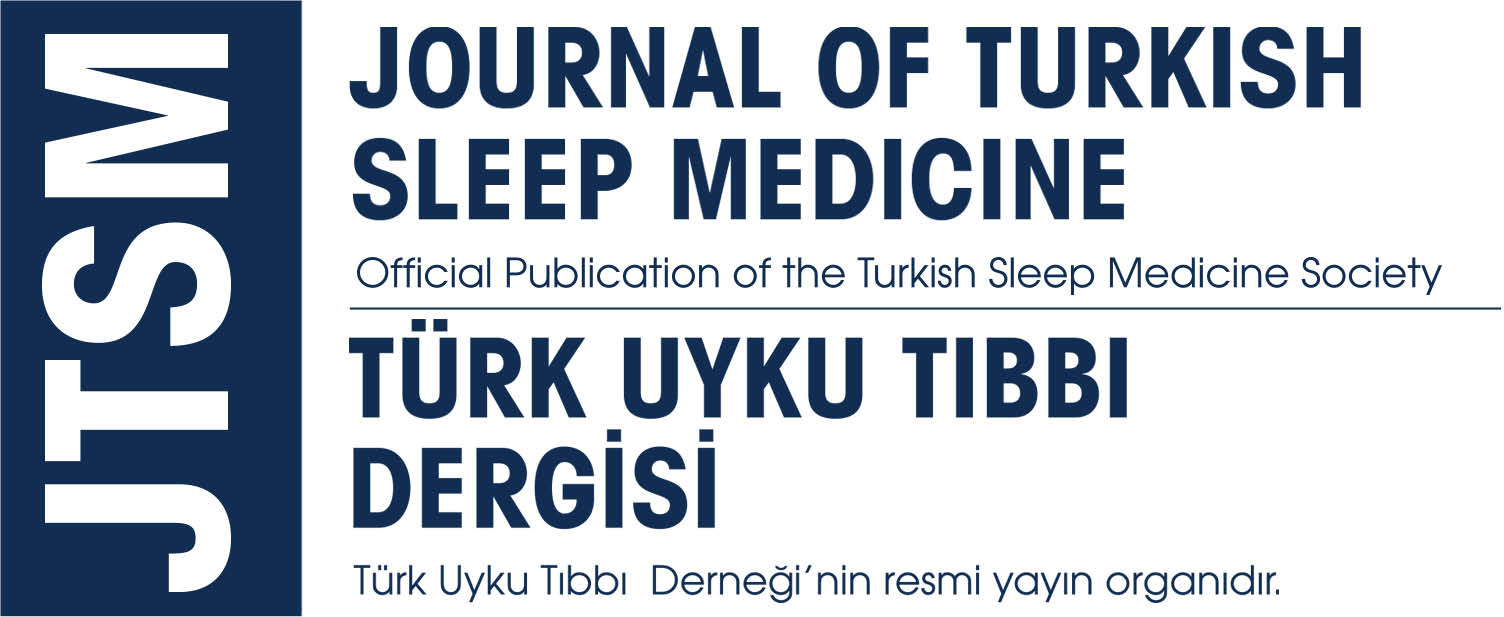In the first issue
In the first issue: In the review of“Insomnia as a Symptom or a Disease”, Dr. Sinan Yetkin and Dr. Hamdullah Aydındescribe secondary insomnia, which may indirectly result from comorbid psychiatric or medical conditions and primary insomnia which could be viewed as a separate disease entity. As the authors stated, conceptualization of this distinction is important for the understanding of etiopathogenesis and for choosing the most appropriate and effective therapy. We can say that this review forms the basis for the reviews that we would publish about insomnia and other sleep disorders.
Does response to different stimuli change during sleep? Dokuz Eylul University Dept. of Biophysics is well known for such investigations and scientific contribution.Dr. Gonca İnanç, Dr. Murat Özgören and Dr. Adile Öniz from this department in the research article titled “Non-Painful Tactile Stimuli and Sleep”presents the comparison of the electrophysiological response to non-painful tactile stimuli in light and deep sleep. Such basic investigations and discussions, which would enhance understanding of sleep wake state, are welcome for publishing in our journal.
In the paper titled“Gender Difference in Apnea and Hypopnea Component in Obstructive Sleep Apnea”, Dr. Melike Yüceege, Dr. Hikmet Fırat, Dr. Sadık Ardıç and Dr. Ahmet U. Demir,compare the distribution of respiratory disturbance in male and female patients who received the diagnosis of obstructive sleep apnea. We hope that this would provide a basis for the discussion of gender differences in sleep related breathing disorders together with its impact on mortality and morbidity.
Obstructive sleep apnea syndrome is frequently seen in acromegaly patients, which is attributed to anatomical changes related to acromegaly. In the article titled“Obstructive Sleep Apnea Syndrome in Acromegaly Before and After Treatment”, Dr. Selda Korkmaz, Dr. Ilkay Çakır, Dr. Fahri Bayram, Dr. Züleyha Karaca, Dr. Sevda İsmailoğulları and Dr. Murat Aksuinvestigate the prevalence of Obstructive Sleep Apnea Syndrome in patients followed with the diagnosis of acromegaly and the change after treatment of acromegaly. We invite such articles which investigate the relationship between sleep disorders and endocrinological disorders to our journal.
In the research article titled“Heart Rate Variabilty During Sleep in Patients with Panic Disorders”, Dr. Sinan Yetkin, Dr. Aykut Erdamar, Dr. Mehmet Yokuşoğlu, Dr. Fuat Özgen and Dr. Hamdullah Aydınpresent the autonomic changes in sleep defined by heart rate variability. We think that electrophysiological changes during sleep are crucial to elucidate diseases and states other than sleep disorders and we ask the researchers to share such articles in the journal.
It is well known that sleep related breathing disorders are associated with increased morbidity and mortality due to the coexisting cardiovascular and endocrinological diseases. Occasionally, respiratory arrest witnessed during polysomnography could be fatal. In the case report titled“Exitus Secondary to Respiratory Arest in a Patient with Obstructive Sleep Apnea During Polysomnographic Investigation”, Dr. Gülçin Benbir, Dr. Mecbure Nalbantoğlu and Dr. Derya Karadenizpresent a case of forty-year old woman, who was referred to the sleep laboratory due to witnessed apnea during her hospitalization in endocrinology ward because of hypertension, hipophyseal microadenoma and Cushing syndrome. During polysomnography the case was died due to central apnea, followed by bradicardia and cardiac arrest. As acknowledged by the authors, since treatment of this life-threatening condition could remove all such complications, recognition and investigation of obstructive sleep apnea syndrome could be life-saving. Thus, diagnosis and treatment of Obstructive Sleep Apnea syndrome is important for preventive medicine.
Dr. Selda Korkmaz and Dr. Murat Aksu, in “Topiramate induced restless legs syndrome: case report”present and discuss the potential mechanisms in a case of restless legs syndrome, which occured upon using toprimate an antiepileptic agent. We hope that such rare cases would be discussed thoroughly.



